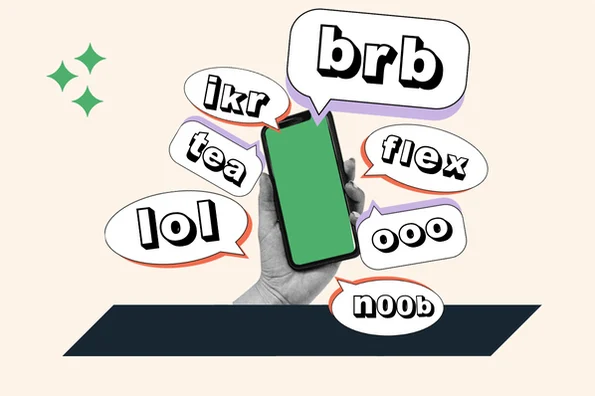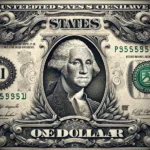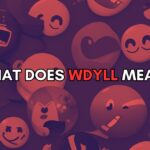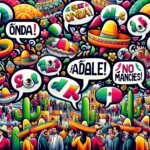In an age where digital communication is as ubiquitous as the air we breathe, internet slang and acronyms have become the new vernacular. “ROFL,” which stands for “rolling on the floor laughing,” is one such acronym that has permeated online chats, social media posts, and even infiltrated our day-to-day text messages. But what does ROFL actually mean, and how did it become such a mainstay in our digital lexicon? Let’s explore the quirky world of ROFL and understand how it represents more than just a surge of laughter.
Understanding ROFL: The Acronym That Makes You Laugh Out Loud
The landscape of digital communication is replete with acronyms, and ROFL is a standout term that embodies the joy and humor exchanged online. As a quintessential component of internet slang, it echoes laughter in a way that transcends the physical sphere, encapsulating intense amusement into four simple letters. Below is a distilled summary of the main points discussed in the article about ROFL.
| Key Points | Details |
|---|---|
| Origin & Evolution | Originated in early online chatrooms for brevity and emotional expression; shows language evolution. |
| Comparison with Other Acronyms | ROFL is more exaggerated than LOL and LMAO, indicating intense laughter. |
| Usage & Variations | Best for casual chats; variations like ROFLMAO and ROFLCOPTER intensify the expression. |
| Related Common Acronyms | Includes FR, TTM, and ISTG, each adding their own emotional dimension to communication. |
| Platform-Specific Popularity | Acronyms vary in use across platforms, with some more prevalent in social media or forums than others. |
| Role of Emoticons | Emoticons enhance the expression of emotions and are often used in tandem with acronyms. |
| Cultural Impact | ROFL is part of meme culture and may influence online social perception. |
| Related Expressions | Expressions like SMDH, BFFR, and IKYFL serve similar or context-specific emotive functions. |
| The Future of Internet Slang | Emergent acronyms suggest ongoing evolution and reflect changing technology and trends. |
| Professional vs. Casual Use | ROFL and similar slang are generally reserved for casual contexts, not professional ones. |
The Evolution of Online Slang
The phenomenon of internet slang traces its origins back to the early days of online chatrooms and bulletin board systems. Users invented acronyms to save time, conserve bandwidth, and convey emotion quickly and effectively. The impact of this internet lingo is significant—it has not only made communication quicker but also more expressive. ROFL and other acronyms like MK, BTC, and TYT are now integral parts of our digital dialogue, revealing the creativity and evolving nature of language.
Here’s how ROFL compares with other popular acronyms:
- LOL (Laugh Out Loud): General laughter
- LMAO (Laughing My Ass Off): Stronger expression of amusement
- ROFL (Rolling On the Floor Laughing): Intense laughter, more exaggerated than LOL
Deciphering ROFL and Its Usage
Diving deep into the ROFL acronym, we find that it is often used to express a reaction of intense laughter to a funny situation or joke, sometimes more exaggerated than the actual response. It’s a way to signal that you find something extremely amusing, even if you’re not literally on the floor. But, as with any slang, knowing when to use ROFL is key. Typically, it’s perfect for casual conversations with friends but perhaps less appropriate in a professional setting or formal communication.
To understand the variations, let’s consider these common iterations:
- ROFLMAO: Combining ROFL with LMAO for added emphasis
- ROFLCOPTER: An extension of ROFL for humorous hyperbole
Common Acronyms Related to ROFL

The digital world is teeming with acronyms similar to ROFL that express varying degrees of laughter or sentiment. Here’s a short list of related acronyms that might pop up in an online conversation:
These expressions amplify the text-based communication experience by adding an emotional dimension that might otherwise be missing.
Acronyms Across Different Platforms
Different digital platforms often see variations in the popularity and usage of specific acronyms. While ROFL might be common on forums or in gaming communities, others like IHHT, LMS, and IMU may hold more sway on social media platforms such as Facebook or Twitter. Understanding the platform-specific lingo is crucial for effective communication in the digital age.
Emoticons and Acronyms: Expressing Emotions Online
In addition to acronyms, emoticons play a pivotal role in conveying feelings online. They work hand in hand with acronyms like ROFL to help bridge the emotional gap in digital texts. Consider the following table featuring emoticons and their meanings commonly paired with ROFL:
| Emoticon | Meaning |
|---|---|
| 😂 | Face with Tears of Joy |
| 🤣 | Rolling on the Floor Laughing |
| 😆 | Smiling Face with Open Mouth |
Pairing these emoticons with ROFL amplifies the message’s intended humor or light-heartedness.
The Nuances of ROFL in Internet Culture
Using acronyms like ROFL can have social implications, affecting how others perceive you online. While it can suggest a playful or casual disposition, overuse or misuse could lead to misinterpretation. ROFL also garners its popularity from internet subcultures and memes, making it a staple in meme culture as evidenced by viral trends on platforms, contributing further to its widespread use—like those found with the terms HYB and FYP.
Related Expressions and Their Contexts
Expressions similar to ROFL serve to convey humor but might fit different contexts better. Here’s when you might opt for these alternatives:
- SMDH: Shaking My Damn Head (more suitable for disbelief or disappointment)
- BFFR: Best Friends Forever (to denote a close friendship)
- IKYFL: I Know You’re Feeling Lazy (for a jesting nudge among friends)
Each of these expressions brings a unique connotation to the conversation.
The Future of ROFL and Internet Slang
Predicting the trajectory of ROFL and internet slang is like trying to catch a cloud—elusive and ever-changing. They may transform or fade as new technology and social trends emerge. Emerging acronyms such as GRWM, WTD, OMM, and OFC hint at an unceasing evolution of our digital vocabulary.
Conclusion
ROFL has solidified its place in modern communication as a symbol of laughter and enjoyment. Whether or not it will continue to be used widely in the future remains to be seen, but its current role is unquestionable. While the acceptance of slang in professional environments is still a subject for debate, it’s undoubted that the digital landscape would be much drier without it.
FAQs about Internet Slang
Addressing some common questions and misconceptions:
- Is it appropriate to use internet slang in work emails?
- Generally, it’s best to stick to formal language in professional settings.
- Can using acronyms like ROFL make me seem less serious?
- Potentially, depending on the context and audience. It’s important to gauge the tone of the conversation.
- Are there resources to keep up with the latest internet slang?
- Yes, websites dedicated to internet culture and language trends can help you stay up-to-date.
- How do I know when an acronym like ROFL is appropriate to use?
- Consider your relationship with the other person and the platform you’re on; when in doubt, opt for clarity.
By familiarizing ourselves with internet slang like ROFL, we can enjoy richer, more expressive online interactions—injecting a bit of humor and humanity into our digital exchanges.
Understanding the nuances of internet slang such as ROFL enriches online interactions, providing a snapshot of our collective digital culture. It’s a nod to the inherent human desire to connect through laughter and shared joy, even if it’s through a screen.
Feel free to refer to the preceding comprehensive guide for a deeper dive into the facets of ROFL and its place in digital communication—whether you’re a linguistics enthusiast or simply curious about the lingo shaping our virtual conversations.







